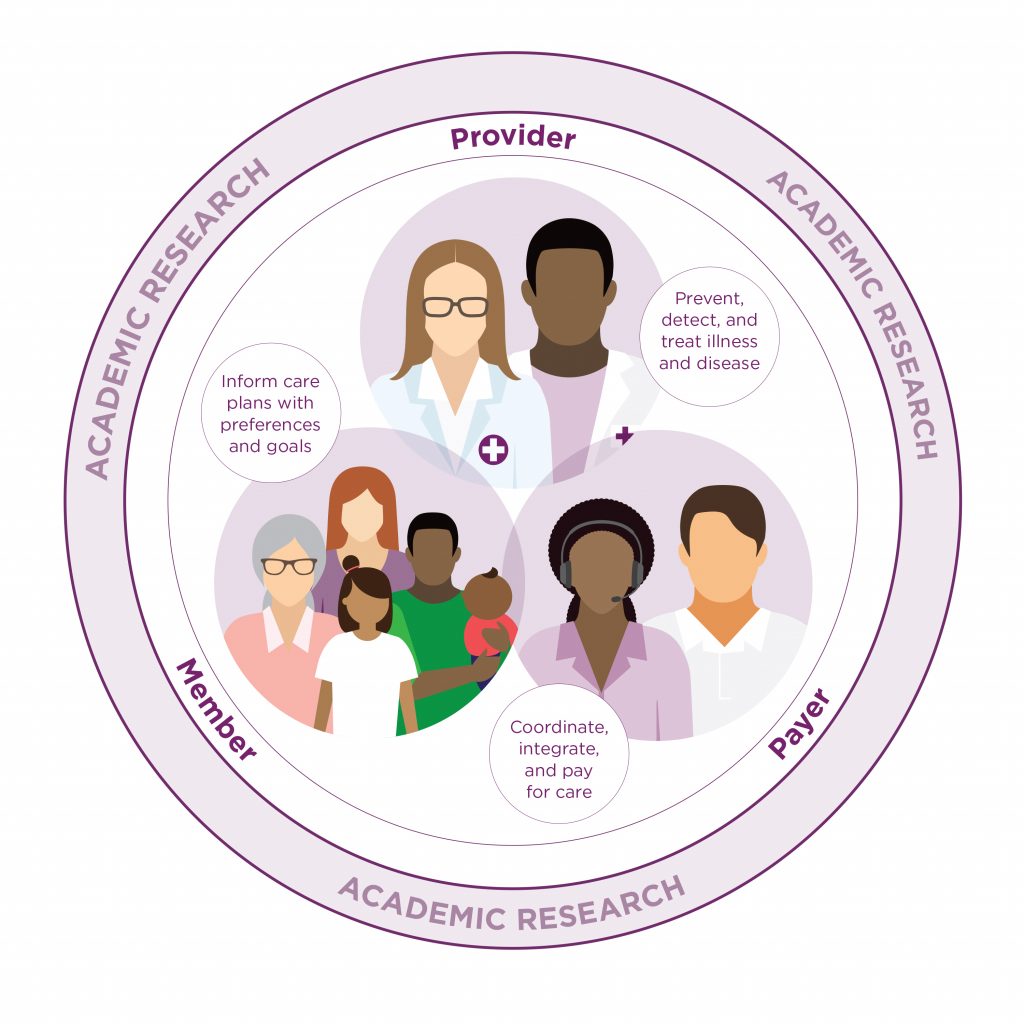How a provider-led health plan can improve employee health and deliver savings
COVID-19 changed the world in many ways—including the way health care was delivered. It hastened a shift to telehealth from in-person visits in many cases. As we come back from the pandemic, the health care industry and care delivery will continue to evolve and adapt to help communities meet their physical and mental health needs. In this ever-changing this environment, choosing a health plan that is part of an integrated health care system can provide you peace of mind, flexibility, added resources, and cost savings to help you navigate into the future of health care.
Why is health care so complicated?
The journey from paying for services (volume) to paying for better health (value) isn’t easy. The U.S. health care system is complex, and change can be slow. This is, in part, due to the myriad of organizations and people involved.
First, there are the various organizations that provide facilities, treatments, and payment for delivered care. Community clinics, hospitals, research centers, payers, and local pharmacies also play an integral role in the process. These organizations work hard to help individuals prevent illness, manage chronic conditions, and stay healthy.
Then, there are the several different groups of people that power and interact with these organizations.
- Patients and their families who seek care or guidance
- Providers—doctors, nurses, and care managers—who deliver the care
- Researchers who discover new cures, ways of providing care, and insights to drive innovation
- Businesses that purchase coverage so their employees have access to preventive and acute care services
- Government—at the local, state, and federal level—which provides new guidelines for care and regulates how care is provided
- Entrepreneurs who develop new technologies to try to improve the health care system
With the millions of people who work in or interact with the health care system, it is no wonder that things get complicated.
Consolidation vs. integration
Traditional health systems are consolidating at a rapid pace.1 For example, CVS has acquired Aetna. Amazon, Apple, and Google are gobbling up health care start-ups and designing their own health tools.
But consolidation is not the same as integration. Simply combining organizations under one logo doesn’t always mean a better value. Consolidation is a step toward integration—which requires shared resources, aligned incentives and processes, and above all, a common vision and culture. But it’s just that: one step in a much bigger process.
Bringing together siloed health care organizations to work as an integrated system can improve care efficiency and effectiveness. Furthermore, this approach allows providers and payers to collaborate in new ways. This collaboration leads to the development, implementation, and scaling of novel, evidence-based approaches to things like:
- Preventing and managing chronic conditions through health coaching.
- Deploying digital tools like telehealth to increase access to care.
- Decreasing pharmacy costs through value-based pharmaceutical contracting.
Why UPMC Health Plan?

In an integrated health care system like the one between UPMC Health Plan, the University of Pittsburgh Medical Center (UPMC), and the University of Pittsburgh Schools of Health Sciences, providers and payers work together to deliver high-quality care at low costs.
Together, we operate as part of an integrated delivery and finance system (IDFS). This model enables us to:
- Develop internationally renowned programs in transplantation, cancer, neurosurgery, psychiatry, orthopedics, and sports medicine through our affiliation with our academic medical research center, the University of Pittsburgh Schools of Health Sciences.
- Establish a deep connection with our providers who understand the needs of their patients.
- Align incentives to promote higher quality care at lower costs.
- Share knowledge, expertise, and technology with UPMC to coordinate care more efficiently.
- Study the best ways to deliver interventions, programs, and benefits to different populations, reducing unnecessary care and improving long-term health outcomes.
- Respond quickly to our communities during times of crisis. During the COVID-19 pandemic our academic medical center researched the disease and possible treatments, provided information to the community, provided high-quality front-line care, and increased access to care and resources through a community health plan.
Integrated health care systems like UPMC’s can help employers maximize the investment they are making in their employees’ health and wellness.
Connect with us
Find out more about our employer group coverage:
Contact your producer or call 1-833-825-2696.



